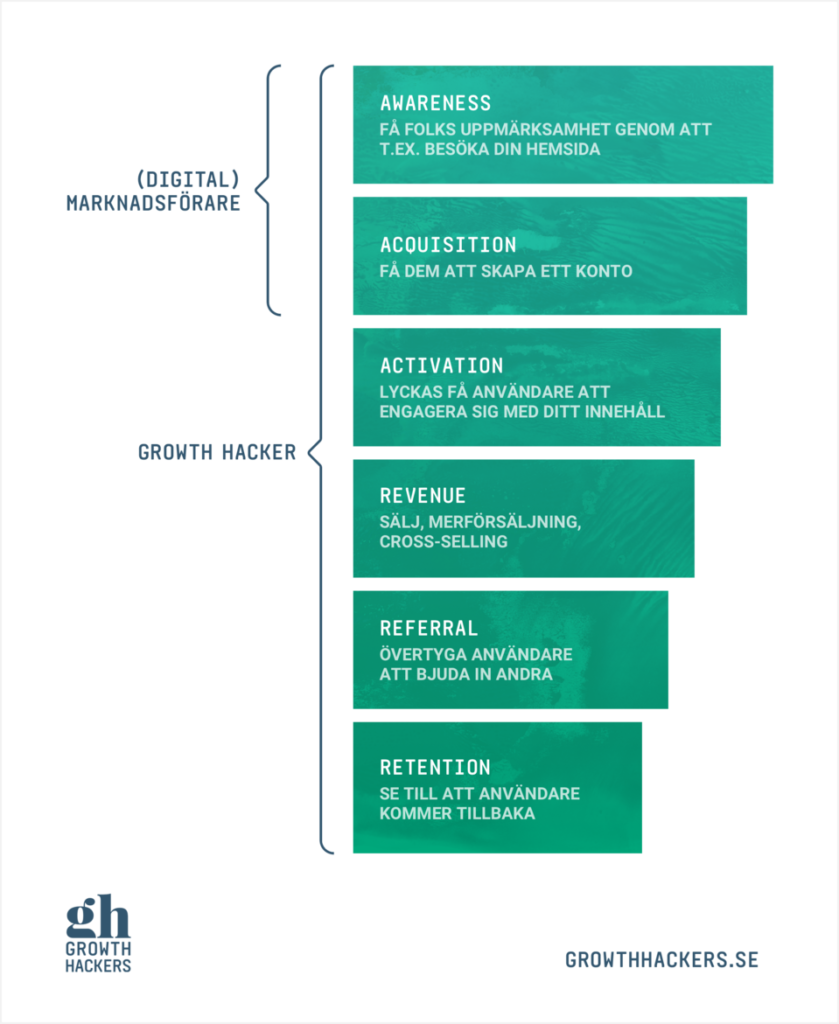Growth Hacking starts here – Interview with Sean Ellis

Last Updated on February 7, 2022 by justin
We had the privilege of sitting down with Sean Ellis, CEO and founder of Growthhackers.com (currently on the web days in Stockholm 20/3 2018) for an interview about Growth marketing / hacking after his lecture at the Growth Marketing Conference in San Francisco in December (2017).
Growth Hacking as a way of working
Sean Ellis says that he sees a lot of interest in Growth (Hacking) Marketing, but that the methodology is still in its infancy. The companies that are currently testing Growth Marketing rarely do so in a systematic way or even with a basic experimental focus. And the companies that are still to some extent experiment-driven unfortunately tend to focus all their experiments around Acquisition, pure marketing campaigns, because they lack the authority to do experiments further down the customer journey. In this way, companies lose great value.
The role of the growth team
According to Sean, the growth team in a company needs to be empowered to experiment over a larger part of the funnel, at least from Acquisition to Activation. In this way, they can improve the onboarding process.

Onboarding customers is the most important thing for growth!
He goes so far as to recommend that a company spend as much as 50% of its resources on onboarding, as the customer’s first user experience needs to be spotless for the customer to want to come back for more. As it looks today in many companies, the responsibility for the user experience falls between the marketing department’s and the product department’s chairs, which means that the necessary experiments are never done.
The growth team’s mandate
Optimally, the growth team should have the opportunity to experiment anywhere on the customer journey. One way to make this happen is to have engineers who are officially part of the company’s Core Team, but who are dedicated to the growth team. In this way, the growth team’s engineers can have access to the company’s source code when conducting experiments.
Freedom with a certain structure equals innovation that provides growth
In this way, the growth team can have enough freedom to be effective. Other parts of the organization, such as those responsible for Branding, may be involved in later stages. A prototype developed by the growth team can always be adapted later in the process to ensure that the product follows the company’s branding guidelines. All to achieve speed.
North Star Metric = The key and 1st step
In summary, Sean tells us that the growth team, like everyone else in the organization, needs to move in the same direction. He recommends that the key people and decision-makers in the company are involved in the start-up of the project, and not just those who work operationally. This is so that you can kick-start the growth initiative by gathering everyone around a sense of urgency – that it is urgent and important to get started with it. When everyone agrees on how important it is to address this immediately, they are given the task of agreeing on a North Star Metric – the data point that will only soar when the company succeeds in realizing its mission. This North Star Metric may change later, the most important thing at this stage is that everyone gets a common goal.

Further reading about the phenomenon Growth Hacking / Marketing
- What is growth hacking?
What does successful growth hacking look like?
Other interviews we did during the Growth Marketing conference